Orchid Root Rot is a common problem for orchid owners. If you are a beginner orchid owner you may not realize they need different care than other plants.
Overwatering Orchids and growing them in the wrong pot or substrate quickly leads to unhealthy and often rotted roots.
If your orchid is looking listless, dropping flower buds for no reason and has soft spongy feeling leaves over watering is the problem.
Orchid are very sensitive to overwatering.
Orchid roots are especially sensitive and cannot tolerate excess water and heavy wet soil around their roots.
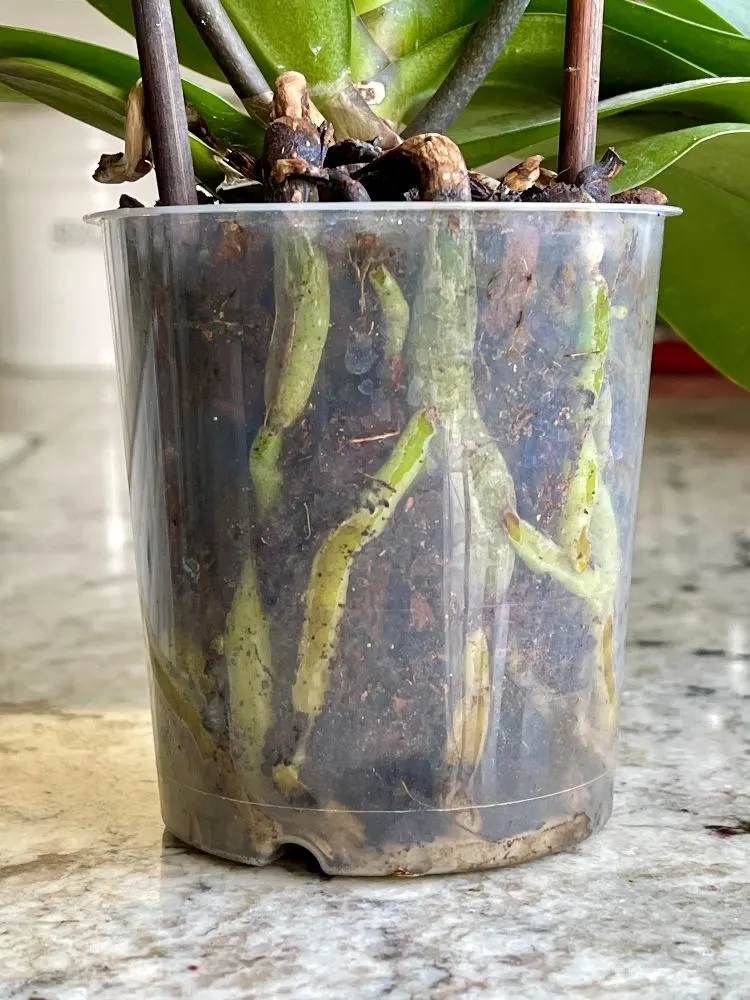
Often Orchids purchased at the store in small pots with densely packed roots will already be suffering from the earlier stages of root rot.
The plant leaves may not look terrible. Your Orchid may even bloom.
In that case, most of the roots in the plant pot are still functioning. But some of the roots may have rotted.
This is a very big problem and needs immediate attention. When the roots are unhealthy they cannot feed the plant so the leaves turn yellow and droop. In advanced cases the roots are so rotten the plant cannot be saved.
Root rot is a fungus. It will spread to the entire root system if left unattended. Act now.
Time for a root trim, fungicide treatment and repot in a well designed Orchid pot. With the proper Orchid potting mix.
What does Root Rot Look Like?
How do you know if root rot is a problem for your orchid? Un-pot the orchid and take a look. Look for these Signs of root rot.
- Healthy orchid roots are light green or silvery in color. Over watered and Rotting roots are dark green or black.
- Squeeze the roots. They should be firm. Rotted roots are mushy.
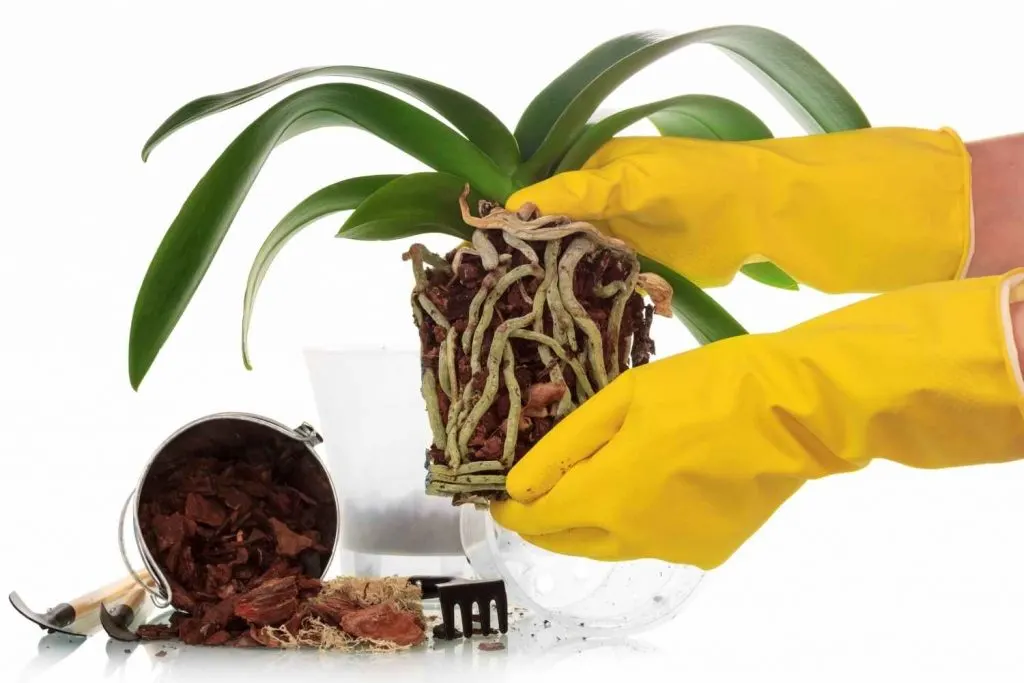
Orchids do survive with some roots damaged due to rot if the damage is not severe and it’s properly rehabilitated. We repotted this Phalaenopsis orchid after it sat in this small pot for two years with poor watering practices.
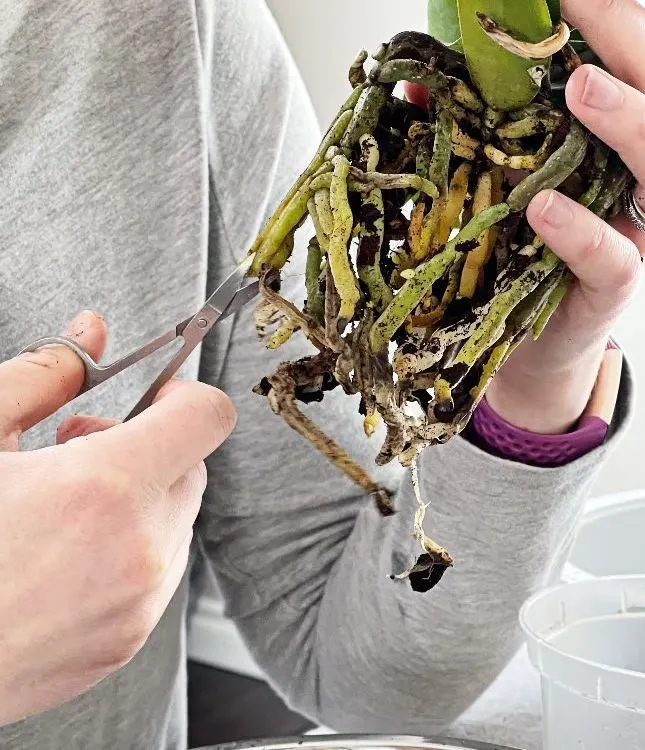
It was watered irregularly. Sometimes too much and sometimes not enough. The roots suffered and some did rot.
How to fix Orchid Root Rot-The Basic steps:
For more details on repotting and orchid Read our post on how to repot an orchid successfully
- Carefully Un-pot the sick orchid.
- Evaluate the amount of rot in your orchid roots by gently removing the old diseased growing medium.
- Trim the rotted roots off ( Watch our video- Kayti demonstrates how to trim rotted Orchid roots correctly.)
- Spray the roots with 3% hydrogen peroxide or other orchid safe fungicide. This eliminates bacteria and fungus that cause and spread root rot.
- Repot your orchid into a new, clean and safe potting mix for orchids
- Repot your orchid in a well designed orchid pot.
- Set your orchid in a bright indirect light and follow the tips in our Orchid care Guide
NOTE: 3% hydrogen peroxide for root rot is often used as a spray directly applied to the roots after trimming. but is somewhat controversial since it can cause to harm the roots vellum (outer coating).
Hydrogen peroxide is good at killing off the bacteria and fungus that cause and spread root rot. Usually it works fine with little ill affects. And it quickly dissipates.
Shop Orchid Plants on Etsy
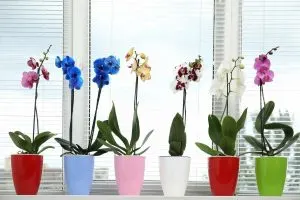
Want more information on How to Fix and Prevent Root Rot?
The Contented Plant
Purchase Orchid Supplies on Etsy

Orchids are Air Plants :
Epiphyte roots absorb nutrients and moisture largely from the surrounding humid air.
Epiphyte roots MUST NOT be compressed into a heavy soil with a poor draining pot. That way lays disaster for your orchid.
Epiphytes or ‘air plants‘ are plants that grow on top of other plants (typically trees) co-existing in the most harmonious, harmless way. They derive their nutrients and other vitals from the air, water, dust, and debris around them
The Sill
Orchid Crown Rot:
In nature Orchids climb trees. The leaves grow sideways so water flows off the leaves to the ground below. In our homes we most often grow Orchids upright like my Phalaenopsis orchid. The orchids will grow fine upright.
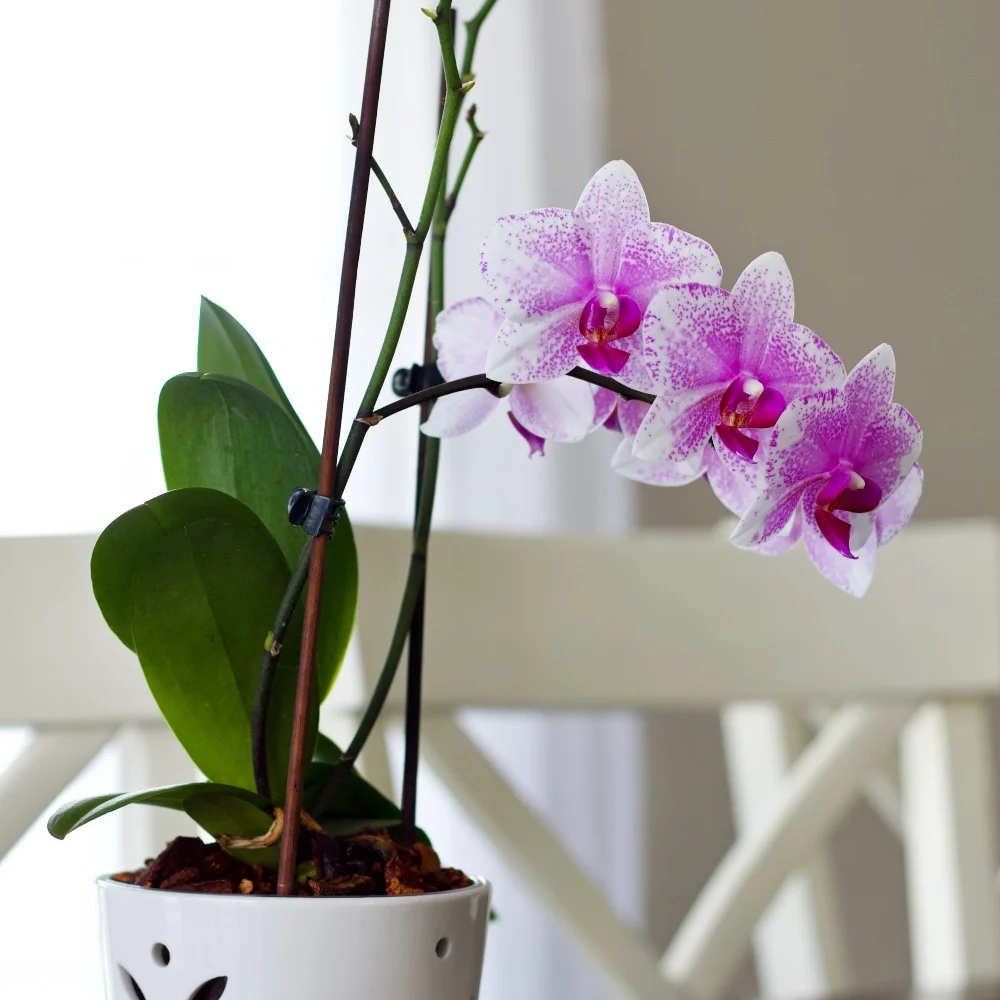
However, we must be careful when we water. DO NOT water the crown of the plant. The crown is the area the leaves attach to the stem. If water is allowed to be trapped at the base of the leaves if will rot the stem at that spot.
This is crown rot. If your leaves turn yellow or get soft and fall off check the attachment area on the stem for crown rot.
This can kill the orchid if it gets too advanced. The stem feeds the leaves. If the crown completely dies it is very difficult for the orchid to grow a new one. The plant will likely die.
To treat crown rot:
- Spray the affected parts with 3% hydrogen peroxide.
- Water your plant properly.
- NO water should be allowed to sit in the crotch of the leaves.
More Help for Growing Orchids Successfully:
These articles on orchids will help you learn the key points on growing common orchid houseplants. Air plants have special needs.
Once you learn what to do these exotic plants will grow trouble free for years and years in your home.
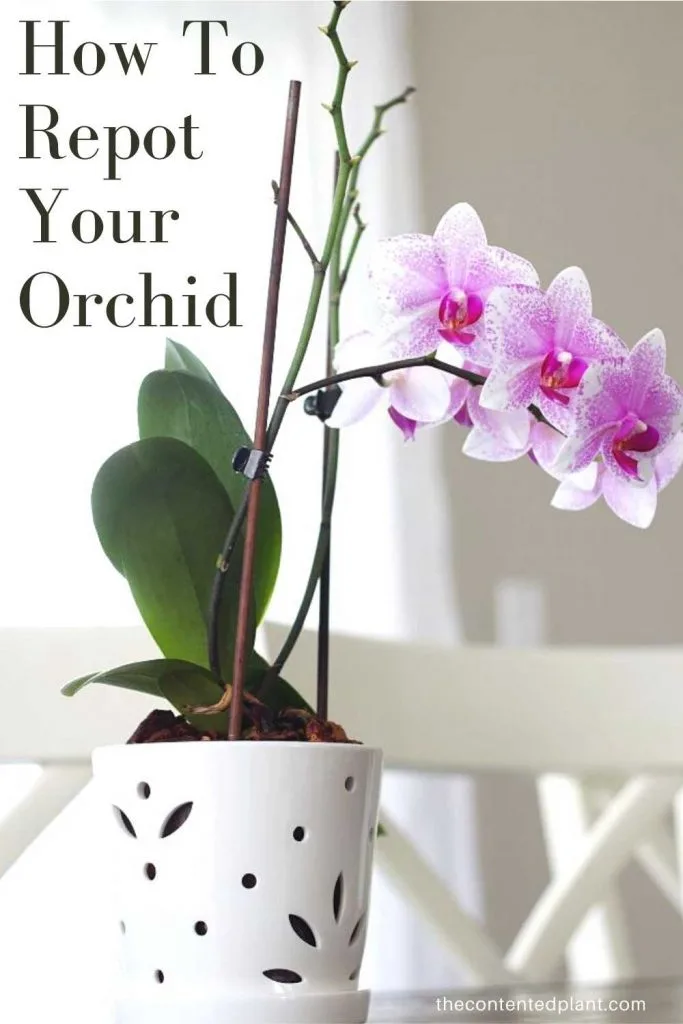
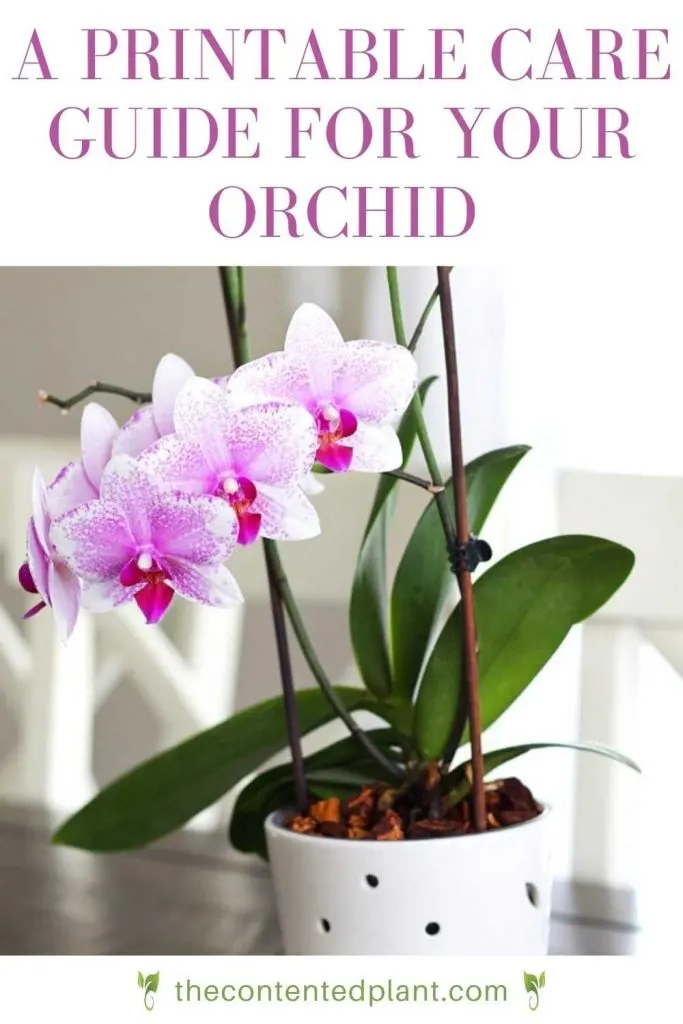
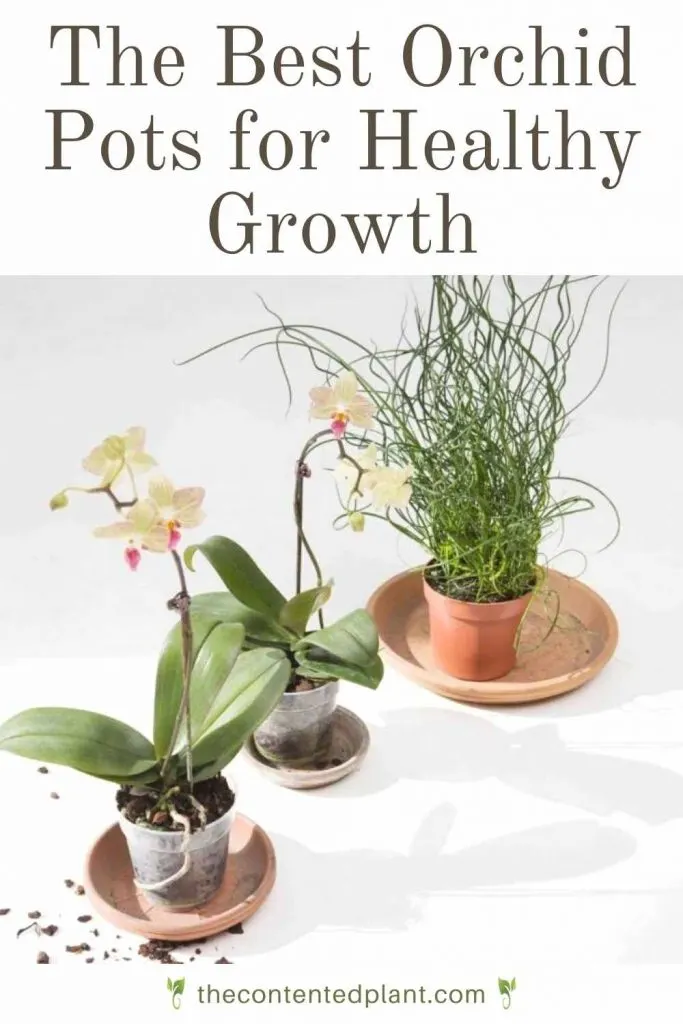
Follow Us:
Find us on YouTube, Instagram , Pinterest and TikTok! We love to Plant chat. We also comment, like and occasionally share your content to our daily stories. We’d love to see your plants. Share your joy in your houseplants. Happy Planting!
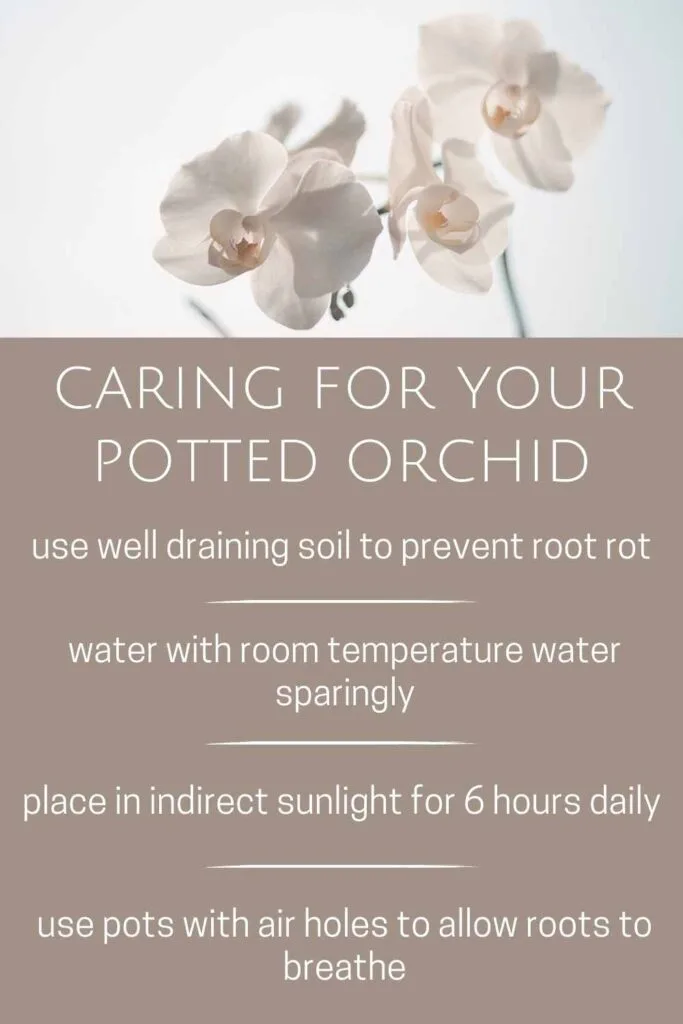
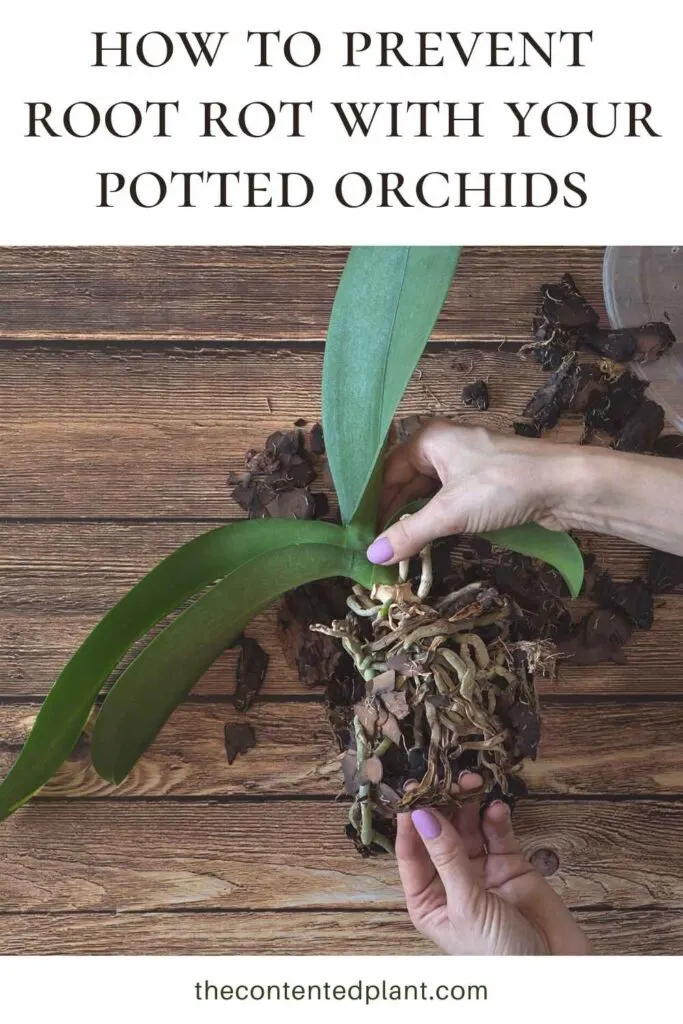
External link Gardeningknowhow.com


Indoor Orchid Care for Beginners - The Contented Plant
Monday 4th of April 2022
[…] let this plant get wet feet. Orchids in heavy wet soils get Orchid root rot and fungus […]
Stromanthe Triostar Care and Plant Profile - The Contented Plant
Monday 1st of November 2021
[…] Orchid Root Rot […]
Philodendron Birkin Care Guide and Profile - The Contented Plant
Friday 23rd of July 2021
[…] section helpful. It covers how to fix root rot in houseplants and we have a guide specifically on orchid root rot. Other posts in this section cover plant pests, diseases and management […]
How to Fix Root Rot - The Contented Plant
Wednesday 7th of July 2021
[…] more about Orchid Root Rot in this […]